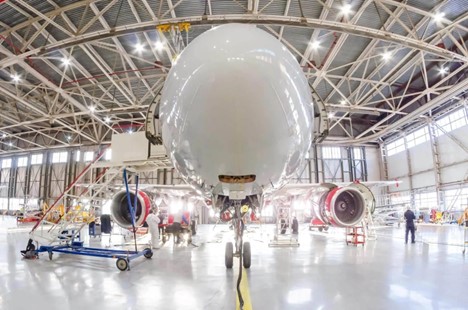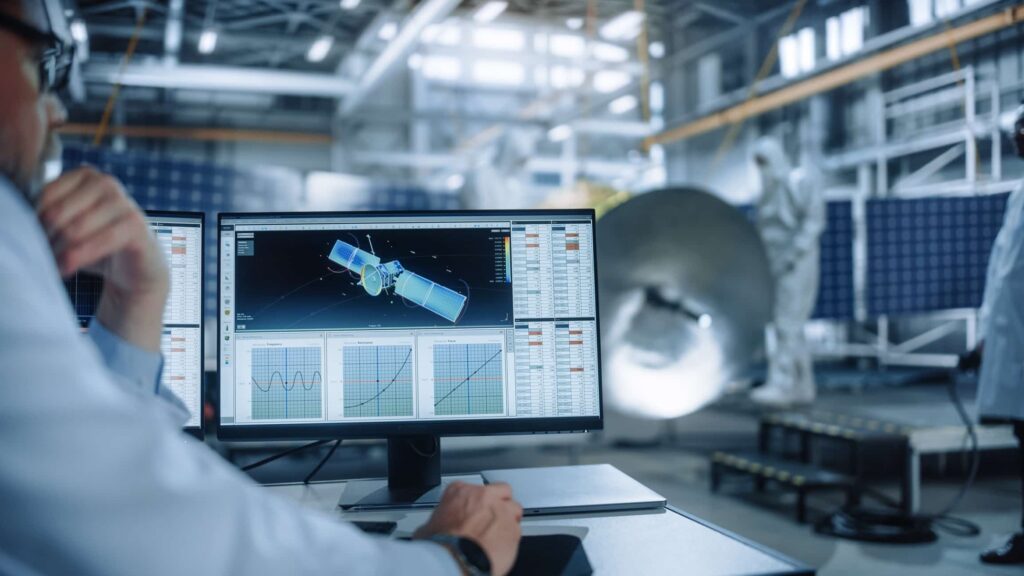Abstract
Prototyping is a key step in aerospace engineering, ensuring that every part meets strict performance, safety, and manufacturing standards. But traditional methods can be expensive and time-consuming, often requiring multiple iterations before landing on the final design.
With modern, connected CAD tools like CATIA and the 3DEXPERIENCE platform, engineers can create highly accurate digital models, run advanced simulations, and optimize designs before anything is physically produced. This not only speeds up development but also cuts costs and minimizes material waste.
In this article, we’ll explore how CAD-driven prototyping is improving precision, streamlining workflows, and integrating with the latest manufacturing technologies to push aerospace engineering forward.
The Role of CAD in Aerospace Prototyping
Aerospace engineering demands extreme precision—small design flaws can impact performance, safety, and compliance with strict industry regulations. Traditionally, refining a design meant building multiple physical prototypes, running manual tests, and making incremental adjustments—a costly and time-consuming process.
Advanced CAD tools have transformed this approach. Engineers can now simulate and refine designs digitally before committing to physical prototypes, allowing them to identify potential issues early. Virtual stress and performance tests help detect weaknesses before manufacturing begins, reducing the likelihood of production errors. Additionally, seamless integration between design and manufacturing ensures greater accuracy, minimizing costly rework.
With parametric modeling, AI-driven design tools, and cloud-based collaboration, aerospace manufacturers can develop more precise designs, accelerate iteration cycles, and improve overall efficiency.
Minimizing Material Waste Through Virtual Testing
One of the biggest expenses in aerospace prototyping is the use of high-cost materials such as titanium, aluminum, and carbon fiber composites. Traditional prototyping methods require multiple iterations, leading to material waste and increased costs.
With CAD, engineers can validate designs virtually before production, reducing the need for multiple physical prototypes. Advanced simulation tools allow for:
- Aerodynamic and structural analysis, eliminating weak points before manufacturing.
- Finite Element Analysis (FEA) to test for material stress, fatigue, and load distribution.
- Computational Fluid Dynamics (CFD) simulations to optimize airflow and thermal performance.
By identifying potential issues digitally, companies can cut material usage, reduce waste, and save in development costs.
Accelerating Time-to-Market with AI-Driven Design
The aerospace industry operates under strict development timelines, and delays can have significant financial repercussions. CAD-driven prototyping enables companies to accelerate product development by automating design iterations and reducing testing time.
- Generate multiple design variations based on predefined engineering constraints.
- Optimize weight and strength ratios, ensuring maximum efficiency without compromising safety.
- Predict performance outcomes, reducing the need for physical wind tunnel and stress tests.
By leveraging AI-assisted CAD modeling, engineers can rapidly evaluate multiple prototypes in a digital environment, allowing for faster decision-making and reduced production timelines.
Enhancing Collaboration with Cloud-Based CAD Solutions
In the past, aerospace prototyping often involved multiple design teams working in isolated environments, leading to inefficiencies and miscommunication. The 3DEXPERIENCE platform enables seamless collaboration between engineers, manufacturers, and suppliers worldwide.
- Instant design updates shared across teams in real time.
- Elimination of version control issues, ensuring engineers work from the latest model.
- Faster approval cycles, allowing for quicker iterations and fewer delays.
With remote access capabilities, teams can work on complex aerospace designs without being restricted to physical office locations, improving workflow efficiency and reducing project bottlenecks.
Integrating CAD with Additive Manufacturing for Rapid Prototyping
One of the most significant advancements in aerospace prototyping is the integration of CAD with additive manufacturing (3D printing). This combination allows companies to directly translate digital models into physical prototypes, reducing reliance on expensive machining processes.
- Enables rapid iteration by quickly producing lightweight, functional prototypes.
- Supports complex geometries that are difficult to manufacture using traditional methods.
- Reduces lead times by eliminating the need for expensive molds and tooling.
By utilizing CAD-driven 3D printing, aerospace engineers can move from concept to functional prototype in a matter of days instead of months, drastically improving innovation cycles.
Leveraging CATIA for Aerospace Prototyping
Aerospace prototyping requires precision, efficiency, and adaptability—qualities that CATIA, Dassault Systèmes’ industry-leading CAD solution, delivers at every stage of development. Designed for complex engineering challenges, CATIA provides a robust environment for designing, testing, and refining aerospace components with a high degree of accuracy.
Advanced Simulation and Virtual Testing
With CATIA, engineers can conduct real-world simulations before committing to physical prototypes. Its built-in analysis tools help validate designs under extreme conditions, reducing the need for costly material testing.
- Finite Element Analysis (FEA) to predict structural behavior under stress, fatigue, and load distribution.
- Computational Fluid Dynamics (CFD) simulations to optimize aerodynamics and thermal performance.
- Multidisciplinary design optimization to evaluate how materials, geometry, and environmental factors interact within a single interface.
By identifying and addressing potential flaws digitally, companies can minimize physical testing, cut material waste, and streamline the development process.
Seamless Design-to-Manufacturing Integration
Aerospace components must meet strict manufacturing standards, and CATIA facilitates a smooth transition from design to production. Its parametric modeling and associative design features allow for easy updates and modifications without disrupting the entire workflow. Additionally, CATIA’s integration with manufacturing tools ensures:
- Real-time collaboration between design and production teams.
- Direct compatibility with CNC machining, composites manufacturing, and additive manufacturing.
- Automated design checks to ensure compliance with aerospace industry standards.
By bridging the gap between design and production, CATIA reduces the risk of errors and enhances manufacturability.
Generative and AI-Assisted Design
Innovations in artificial intelligence and generative design are reshaping aerospace engineering, and CATIA is at the forefront of this transformation. With AI-driven optimization, engineers can:
- Generate multiple design variations based on weight, strength, and performance criteria.
- Reduce structural mass while maintaining integrity, improving fuel efficiency.
- Automate repetitive design tasks, accelerating the development cycle.
By leveraging AI-assisted modeling, aerospace teams can explore more design possibilities in less time, leading to optimized, high-performance components.
Cloud-Based Collaboration with the 3DEXPERIENCE Platform
CATIA’s integration with the 3DEXPERIENCE platform enhances collaboration across global aerospace teams.
- Real-time updates across departments, suppliers, and manufacturing partners.
- Version control and data traceability, reducing errors caused by outdated files.
- Scalable project management, allowing teams to work remotely while maintaining efficiency.
With cloud connectivity, aerospace companies can streamline design reviews, reduce bottlenecks, and accelerate decision-making.
Pioneering the Future of Aerospace Prototyping
As aerospace manufacturers continue to push the limits of innovation, CATIA is evolving to meet their needs with cutting-edge capabilities. Augmented and Virtual Reality (AR/VR) enable immersive design reviews and seamless digital twin integration, enhancing collaboration and decision-making. Sustainable design solutions help optimize material usage, reducing environmental impact without compromising performance. Automated compliance verification ensures designs meet regulatory standards from the outset, streamlining certification processes and minimizing costly revisions.
By adopting CATIA, aerospace companies gain a comprehensive toolset that enhances precision, streamlines workflows, and improves efficiency from concept to production.
Looking to optimize your aerospace prototyping process? Contact Mecanica today to explore tailored solutions that align with your engineering goals.


